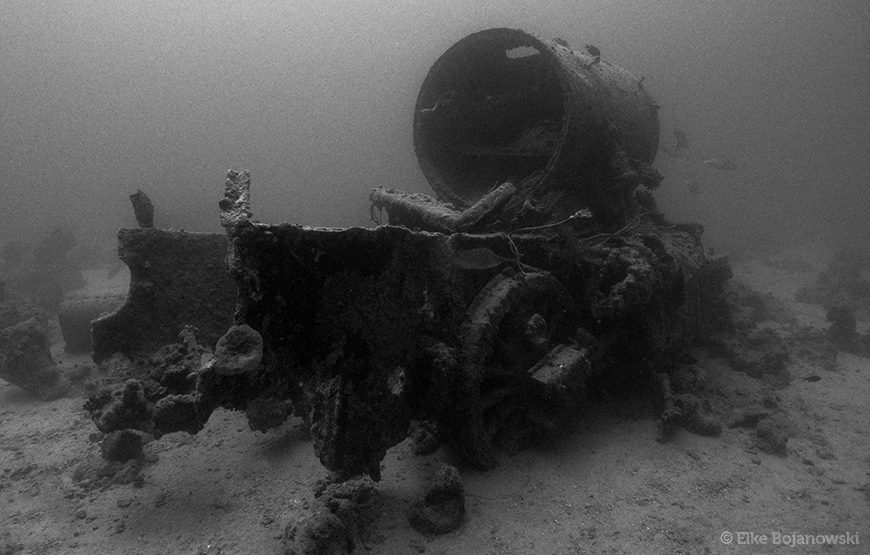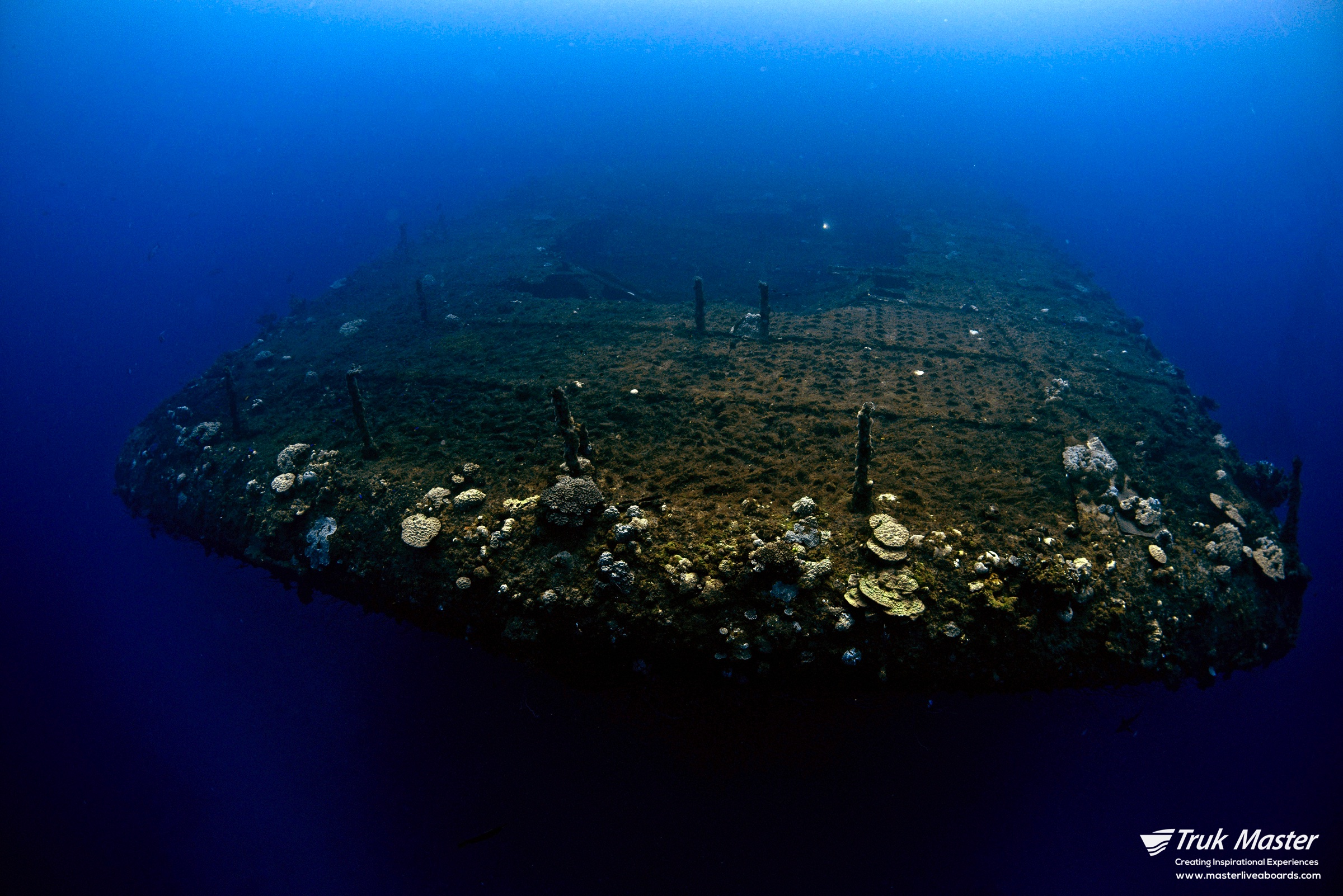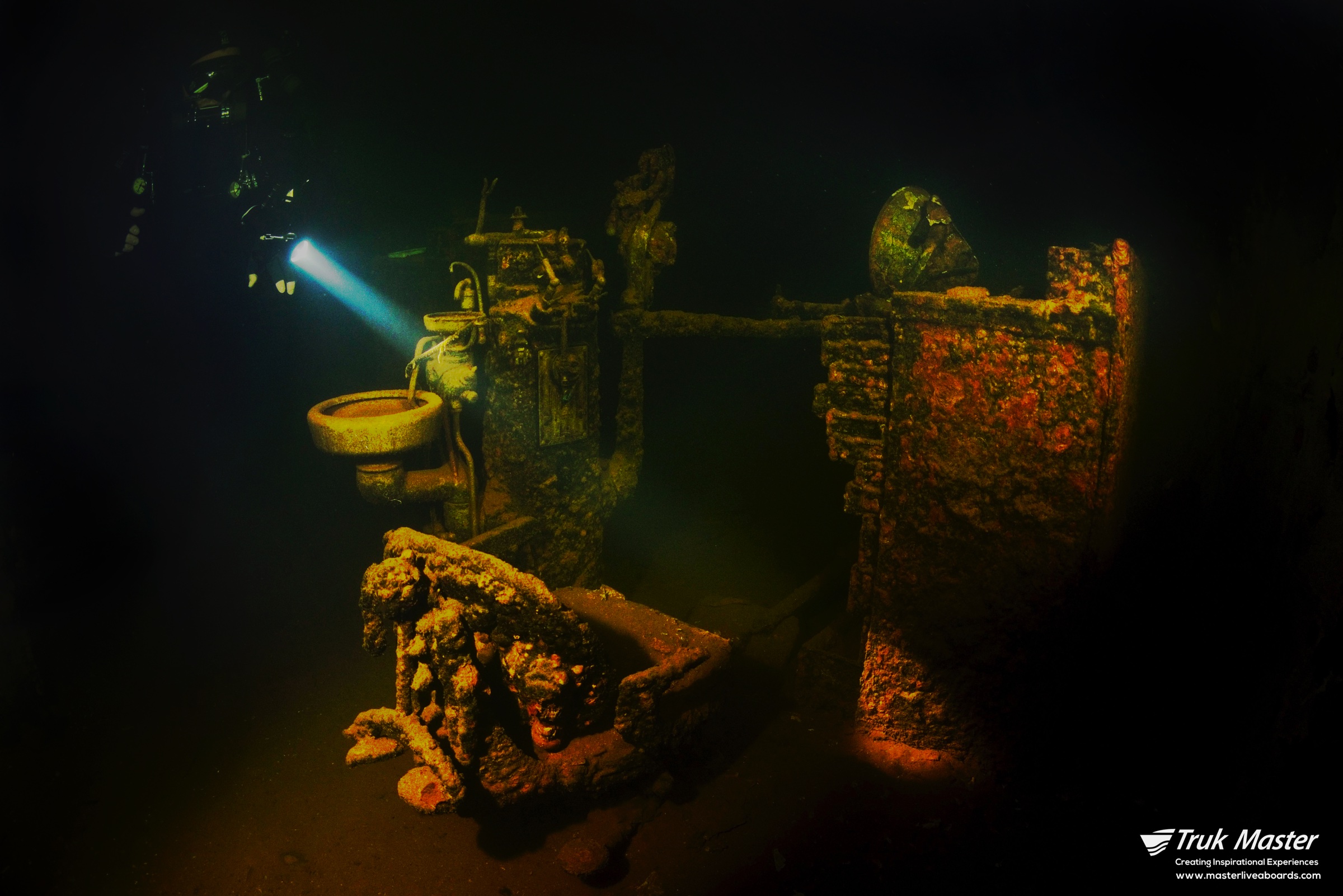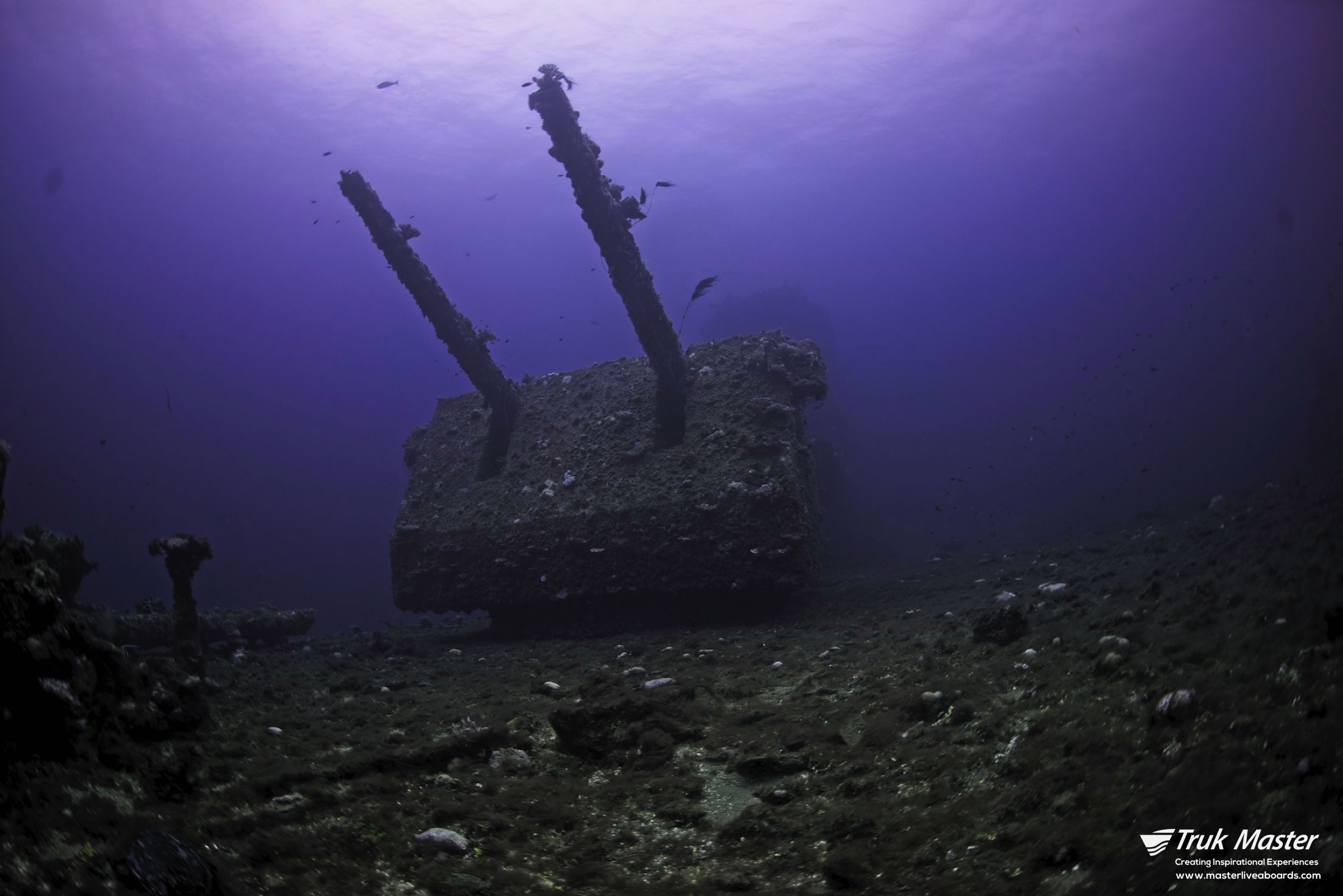The Ultimate Guide to Wreck Diving

Are you new to scuba diving or a passionate wreck diver seeking tips and insights to enhance your underwater adventures? If so, the Ultimate Guide to Wreck Diving is exactly what you need! Let me make one thing clear, this is NOT your typical “Wreck Diving Guide.”
In this guide, I’ll explore what wreck diving is, the various types of wreck diving, and share some of what I believe are the best wreck diving destinations and my personal favourite wrecks to explore. While I won’t dive into fleeting “trends,” I will recommend reliable equipment that has served me well during over 20 years of teaching wreck diving.
Of course, every diver has their own top wrecks and destinations around the world so please let us know if you think other wrecks should be added!
Wreck Guide Contents
This Ultimate Guide to Wreck
Diving includes:
• What Is Wreck Diving?
• Types of Wreck Penetration Dives
• Top 10 Reasons To Try Wreck Diving
• World’s Top Wreck Diving Destinations
• Best Wreck Dives in the World
• Hazards Of Wreck Penetration Diving
• Top Tips For Safer Wreck Diving
• What Equipment is Necessary for Wreck Diving?
• Why Is Wreck Diver Training Important?
• Ultimate Wreck Diving Guide Summary


What is Wreck Diving?
Are you passionate about wreck diving and eager for tips to enhance your dives? Look no further! This Wreck Diver’s Guide is your ultimate resource, covering everything from essential gear and locating wrecks to safety practices and proper dive etiquette. Whether you’re a seasoned diver or a newcomer, this guide has something for everyone. Dive in and join us on a thrilling journey through the wonders hidden beneath the waves!
Wreck diving is a captivating and adventurous form of scuba diving that involves exploring the remains of sunken ships, airplanes, and other man-made structures resting on the ocean floor. These underwater sites offer a mix of history, mystery, and marine life, making them a unique experience for all levels of divers.
Getting Started with Wreck Diving
With the right training and equipment, wreck diving can be safe, fun, and immensely rewarding. To begin, you’ll need to complete a PADI Wreck Diver certification through a trusted dive center or club. Once certified, carefully plan your dives by researching sites suitable for your skill level and comfort.
Essential Gear for Wreck Diving
To ensure a successful dive, equip yourself with:
A high-quality scuba mask and fins
Buoyancy Control Device (BCD), Tank, regulator, and gauges, exposure suit appropriate for the dive conditions, Dive lights for visibility inside wrecks, dive knife for emergencies or entanglement risks.
Respecting Wrecks and the Environment while exploring wrecks is thrilling, it’s crucial to remember that these sites are often delicate ecosystems and historical treasures. Follow safe diving practices to protect the environment:
Ascend slowly to avoid harming marine life and yourself.
Refrain from touching or disturbing artifacts.
Stay mindful of your buoyancy to prevent accidental contact with fragile structures.
Embark on Your Next Adventure
Wreck diving offers a chance to uncover history and marvel at the beauty of underwater worlds. With proper training, planning, and respect for the environment, you can safely explore these breathtaking sites. So, what are you waiting for? Start planning your next wreck diving adventure today!
Types of Wreck Penetration Dives
Wreck penetration dives can be categorized into three main types: non-penetration, limited penetration, and full penetration. If you’re planning to expand your wreck diving skills or embark on a wreck diving trip, it’s essential to research and ensure you have the appropriate training and experience for the dives you intend to undertake. Many dive centers require specific certifications to guide you safely and help you fully enjoy your experience.
1. Non-Penetration Diving
Non-penetration dives are the most accessible and widely practiced type of wreck diving. These dives focus on exploring the exterior of a wreck without entering its interior. Divers can admire features such as hull plates, portholes, propellers, and other external structures.
- Ideal for: Beginners or divers who are new to wreck diving and may not feel comfortable entering enclosed spaces.
- Safety level: Generally considered safe as they avoid confined or potentially hazardous areas within the wreck.
2. Limited Penetration Diving
Limited penetration dives involve entering partway into a wreck, such as exploring open sections of the hull or cabins, while avoiding fully enclosed areas like small rooms or tight passageways.
- Ideal for: Divers with some wreck diving experience who want to extend their explorations but prefer to avoid confined spaces.
- Safety considerations: Requires careful planning and situational awareness to avoid potential entanglements or disorientation.
3. Full Penetration Diving
Full penetration dives involve navigating deep into the interior of a wreck, such as through passageways or rooms, often in large sunken ships. These dives demand advanced skills and specialized training to manage the increased risks associated with tight, enclosed spaces.
- Ideal for: Highly experienced divers with certifications in wreck and overhead environment diving, such as cave or cavern diving.
- Required equipment: Dive lights, redundant air supplies, and other specialized tools to ensure safety in dark, confined areas.
- Safety level: High-risk; meticulous planning and adherence to safety protocols are essential.
Remember!
Each type of wreck penetration dive offers a unique experience, but it’s crucial to match your dive type with your skill level and training. Whether you’re observing a wreck’s external beauty, venturing slightly inside, or exploring its depths, proper preparation and respect for safety are key to enjoying the adventure.


Top 10 Reasons to Try Wreck Diving
Are you ready for an exciting underwater adventure? Wreck diving is the perfect activity for thrill-seekers and explorers alike! It offers the chance to uncover hidden secrets beneath the waves, from historic relics to vibrant marine life. Here are the top 10 reasons to dive into wreck diving:
- Popular Specialization: The PADI Wreck Diver certification is among the most sought-after specialties due to the unique challenges and excitement it brings.
- Diverse Sites: Whether exploring historic shipwrecks or modern artificial reefs, each wreck offers a unique and breathtaking experience.
- History Beneath the Waves: Wreck diving provides an opportunity to connect with our past, learning about historical events and marine archaeology.
- Incredible Discoveries: From spotting colorful marine life thriving inside wrecks to uncovering hidden artifacts, the possibilities for exploration are endless.
- Global Adventures: A wreck diving certification opens doors to epic dive trips worldwide, from local sites to legendary shipwrecks in exotic locations.
- Professional Guidance: Diving with a PADI professional ensures you gain valuable tips and insights, enhancing both safety and enjoyment.
- Versatility: Whether you’re new to wrecks or an experienced diver, PADI Wreck Diver training equips you with the skills needed for any underwater wreck adventure.
- Skill Development: Certification includes advanced training in buoyancy control, navigation techniques, emergency procedures, and search patterns, making you a more confident diver.
- Comprehensive Knowledge: Learn about the history, physics, and biology of shipwrecks, as well as the equipment and strategies necessary for safe and successful dives.
- Unparalleled Experiences: From navigating inside sunken vessels to observing rare marine species, wreck diving offers unforgettable adventures you won’t find anywhere else.
Why Wreck Diving Stands Out
Wreck diving combines exploration, history, and nature into one thrilling activity. Whether you’re photographing vibrant corals, testing your navigation skills, or contributing to maritime archaeology, the benefits are endless. It’s an opportunity to improve your diving abilities, challenge your courage, and experience unique underwater environments.
With so much to offer, it’s no surprise that wreck diving is one of the most popular and rewarding scuba adventures. Ready to take the plunge? Start your wreck diving journey today!
World’s Top Wreck Diving Destinations
Wreck diving offers an exhilarating mix of history, adventure, and marine exploration. Whether you’re drawn to historic shipwrecks or modern wrecks brimming with life, there’s a destination for every wreck diving enthusiast. Here are some of the world’s top wreck diving sites:
1. Truk Lagoon, Pacific Ocean
Located in the western Pacific, Truk Lagoon is often regarded as the ultimate wreck diving destination. Known as the “Ghost Fleet,” it’s home to over 50 Japanese ships and aircraft sunk during the 1944 Battle of Truk Lagoon. This underwater museum offers an unparalleled experience, combining history and marine biodiversity.
2. Coiba National Park, Panama
Situated in the UNESCO-listed Coiba National Park, these wrecks offer a blend of historical intrigue and natural beauty. The site features vessels sunk during pirate raids in the 17th and 18th centuries alongside more modern shipwrecks. The park’s vibrant marine life adds to its allure, making it a must-visit destination.
3. Red Sea, Egypt
The Red Sea is a wreck diver’s dream, boasting numerous wrecks off the coasts of El Gouna, Hurghada, and Sharm el-Sheikh. From massive cargo ships to smaller wooden vessels, these wrecks are teeming with brightly colored fish and other marine creatures, creating a spectacular underwater scene.
4. Malta, Mediterranean
Malta is a treasure trove for wreck divers, offering numerous shipwrecks with rich historical significance. Many of these ships sank during the Great War when Malta was under siege. Today, they provide divers with a unique opportunity to explore history while enjoying the island’s clear Mediterranean waters.
Plan Your Next Wreck Diving Adventure
Each of these destinations offers a distinct wreck diving experience, combining history, adventure, and marine biodiversity. Whether you’re exploring sunken warships, pirate-era vessels, or modern artificial reefs, these sites promise unforgettable underwater adventures. Where will your next dive take you?


Best Wreck Dives in the World
Wreck diving is a thrilling adventure, combining history, marine exploration, and adrenaline. Whether you’re seeking historic vessels or modern wrecks teeming with marine life, there’s a wreck dive to suit every diver. Here are some of the best wreck diving sites around the globe, presented in no particular order:
1. SS President Coolidge (Vanuatu)
Situated off the coast of Espiritu Santo, the SS President Coolidge is one of the world’s largest and most accessible shipwrecks. This former luxury passenger liner, converted into a troopship during World War II, struck a mine and sank in 1942. Today, its intact decks and artifacts offer an unforgettable dive experience for both beginners and advanced divers.
2. HMHS Britannic (Greece)
The HMHS Britannic, sister ship to the Titanic, is the world’s largest intact wreck and a remarkable site near the Greek island of Kea. Sunk during World War I by a mine, this Olympic-class liner remains largely preserved, offering a unique and challenging dive into maritime history.
3. USS Truxtun Wreck (Bahamas)
Near Bimini Island in the Bahamas lies the USS Truxtun, a cargo vessel sunk by German U-boats in 1942. Known as the Truk Master Wreck, this site combines historical intrigue with abundant marine life, including sharks, rays, and colorful tropical fish, making it a must-see for wreck enthusiasts.
4. SS Thistlegorm (Egypt)
In the Red Sea near Sharm el-Sheikh, the SS Thistlegorm is a diver’s favorite. This British cargo ship was bombed in 1941 and now lies scattered with relics like trucks, airplane parts, and motorcycles. The site is teeming with marine life, making it both a historical and ecological marvel.
5. Yongala Wreck (Australia)
Part of the Great Barrier Reef near Queensland, the Yongala Wreck is renowned for its vibrant marine biodiversity. This 110-meter passenger steamer sank during a cyclone in 1911, and today it’s home to reef sharks, sea turtles, rays, and an array of coral species, offering an unforgettable underwater experience.
6. SS Yongam (South Korea)
Located off Jeju Island’s coast, the SS Yongam is one of Asia’s premier wreck dives. This 228-meter cargo vessel, which sank in 1986, is now a thriving marine habitat, attracting species like rays, eels, sea turtles, and schools of tropical fish.
Ready to Dive In?
Each of these wreck sites offers a unique combination of history, adventure, and marine life. Whether you’re exploring war relics, artificial reefs, or natural habitats, these dives promise unforgettable underwater experiences. Contact our Travel Team to help decide which destination will you explore next?
Hazards of Wreck Penetration Diving
Ready to explore the mysteries of a shipwreck? Diving into a wreck requires specialised training and equipment due to its unique overhead environment and potential hazards.
Wrecks often rest in dramatically twisted angles, their structures permanently shaped by the ocean’s powerful forces. Navigating through these twisted metal remains can be disorienting, as no walls or doorways are aligned with the seafloor. Over time, the integrity of a wreck deteriorates, with unsecured objects potentially breaking off and blocking pathways. Rusted doors may also become jammed or stuck, presenting further challenges for divers.
Entrapment or Entanglement
Shipwrecks often attract fishing activity due to their structure, with remnants like monofilament lines or lost nets posing significant risks. These hazards can be difficult to spot beneath the water’s surface but can entangle divers if they are not vigilant. Training prepares divers to handle these risks and respond to potential entanglement situations, especially when dealing with debris or dislodged objects from wrecks.
Disorientation & Getting Lost
Exploring a wreck is an exhilarating journey into history, but it comes with unique navigational challenges. The unpredictable angles and decaying structure can unsettle even experienced divers. Rusted doors, loose walls, and blocked compartments only add to the complexity of moving through these sunken structures. With hidden corners and surprises at every turn, wreck diving keeps divers on their toes.
As you explore, it can be easy to lose track of your movements and struggle to find your way out. Wreck reels are essential tools, ensuring divers stay on course even in poor visibility or when navigating large wrecks. These tools make it easier to retrace your steps and exit the wreck safely.
Unplanned Diver Separation
One of the most common dangers in scuba diving is unplanned separation from your dive buddy. This can occur for various reasons, such as equipment failure, loss of visibility, or disorientation. Losing contact with a dive buddy in confined spaces like wrecks can be particularly dangerous, especially in low-visibility conditions or strong currents.
Silt Out or Loss of Visibility
Wrecks often have limited visibility due to their confined nature and the disturbance of sediment when moving around. It’s essential to prepare for this by carrying backup lights and large reels for navigation lines. Divers should also employ specialized finning techniques and maintain excellent buoyancy control to avoid kicking up sediment and compromising visibility.
In a silty environment, visibility can change rapidly, making navigation even more challenging. Having a line attached to a trusted reel increases safety and ensures divers can find their way out, even in murky conditions.
Loss of Gas
Effective planning is crucial when diving wrecks, especially when exploring deeper wrecks with limited exits. Divers must carefully calculate air consumption and consider using additional tanks or pony bottles with extended hoses to navigate tight spaces.
Taking a wreck penetration certification course helps divers prepare for emergency situations, ensuring they have the skills and knowledge to safely exit the wreck with enough gas for a safe ascent and decompression stops. With proper planning, divers can confidently explore wrecks, knowing they have sufficient air for a safe return to the surface.
Wreck penetration diving offers incredible adventure, but it comes with inherent risks. Proper training, equipment, and careful planning are key to ensuring a safe and rewarding experience.


TOP TIPS FOR SAFER WRECK DIVING
Wreck diving is one of the most rewarding and thrilling experiences a diver can have. While many divers explore shipwrecks, there’s also the exciting opportunity to dive on aircraft and other fascinating vessels found beneath the surface. Wrecks have become so popular that retired ships are deliberately sunk to create artificial dive sites, offering not only captivating habitats but also rich histories that reefs simply can’t match.
Master Buoyancy Control: Maintaining excellent buoyancy control is crucial when diving on wrecks. You want to avoid sinking uncontrollably, kicking up sand or debris, which can reduce visibility for both you and other divers.
Refine Your Finning Technique: Work on your finning skills. Techniques like kicking hard before turning a corner or using one foot to push yourself through tight spaces can help you navigate wrecks more efficiently.
Carry the Right Gear: While wreck diving doesn’t always require specialized equipment for non-penetration dives, a reliable dive light is essential to illuminate holes and openings. Check out the “Scuba Gear for Wreck Diving” section for more information on this gear.
Be Mindful of Water Movement: Be aware of currents and the potential for water movement to carry you away, especially when navigating wrecks. Follow natural channels and be cautious of suction or currents, which may not always be immediately obvious.
Avoid Sharp Edges: Wrecks can be hazardous, with sharp edges, twisted metal, and protruding pieces that can cause injury. Be extra careful when approaching these areas and consider setting an alarm on your dive computer to avoid going deeper than planned.
Dive Within Your Training Limits: The temptation to explore every room or corner of a wreck can be strong, but it’s important to dive within your training limits. While some wrecks offer safe swim-throughs, wreck penetration diving requires advanced skills to manage gas, navigation, and a safe exit. Additional training is highly recommended if you’re interested in wreck penetration.
Follow Separation Rules: As with all diving, if you lose sight of your buddy, wait for one minute underwater. If you can find them and confirm they are okay, you can continue your dive. However, never resume a dive unless you can easily locate your buddy without difficulty in depth or time before surfacing. It’s always a good idea to have an extra set of eyes on the wreck in case anything unexpected occurs.
Research the Wreck: Before diving on a wreck, take time to research it. Understanding the site, its layout, and any known hazards will help you approach the dive with confidence and ensure a more enjoyable and safe experience underwater.
WHAT EQUIPMENT IS NECESSARY FOR WRECK DIVING?
Are you ready to explore the depths of a shipwreck? Wreck diving requires specialized equipment and training due to its unique overhead environment. Since wreck penetration dives often involve navigating confined spaces, it’s essential to come prepared with the right gear. Serious wreck divers may want to invest in equipment designed specifically for these types of dives.
Make sure to carry spare torch batteries, gloves, and a diving mask for situations where visibility is poor or obstacles block your path, such as rocks. Don’t forget proper footwear—it can get wet from overhead currents at any depth!
Preparation is key, as wreck diving involves some inherent risks. Even with limited entry points due to safety concerns, accidents can still happen. Always be ready for any scenario.
In some wrecks, the environment can be dark and murky, making it essential to use a dive light. A head torch can help guide your team members who may lose visibility in certain areas, ensuring they can navigate safely without trouble. We always bring ours on every dive—it’s an important tool for safety.
Dive Light: Invest in a high-quality dive light that fits comfortably in your hand. Ensure it has a lanyard or wrist strap for easy access and secure handling underwater. Consider carrying a backup light for added safety in case of malfunction.
Dive Knife: A dive knife is an essential tool for wreck diving, offering both straight and serrated edges to handle a variety of underwater situations. Fasten it securely to your calf strap or weight belt for quick access when needed.
Underwater Slate: A slate can be invaluable for mapping the wreck and documenting your findings. It’s not only a safety tool but also a way to uncover hidden treasures within these historical sites.
Wreck Spool or Reel: A wreck reel is an essential navigational aid, helping divers mark their routes and stay safe when exploring submerged wrecks. It ensures a secure dive and helps prevent disorientation during penetration dives.
Marker Buoy: Use marker buoys to mark your exact location at the surface. These tools help pinpoint where you are, assisting with navigation and ensuring a successful exploration.
Extra Breathing Gas: Having extra breathing gas is crucial when wreck diving, especially during penetration dives. It’s easy to lose track of your air supply or become disoriented inside a wreck, so a redundant gas supply gives you peace of mind and helps you stay safe.
Dive Computer: A dive computer is essential for precise monitoring of your dive time and depth. It allows you to track every minute of your dive, offering more flexibility for safe ascent and maximizing your time exploring.
Thick Gloves: Thick gloves protect your hands from sharp objects and hazardous edges on the wreck, such as metal or coral. They also help prevent skin damage if you need to grab onto something or pull yourself through strong currents.


WHY IS WRECK DIVER TRAINING IMPORTANT?
Wreck diving is an exciting and increasingly popular activity for divers of all levels. However, to explore these unique and often challenging dive sites safely, it’s essential to have the proper training and certification. At PADI Wreck Diver Training, we offer a comprehensive range of courses designed to equip you with the knowledge, skills, and experience needed for safe and successful wreck dives.
Whether you’re just getting started or looking to expand your skills with additional specialties, PADI Wreck Diver Training has a course tailored to your needs. Our programs cover everything from basic navigation techniques to advanced wreck penetration strategies, ensuring you’re prepared for various dive conditions. Whether you’re diving on sunken ships, aircraft, or artificial reefs, PADI Wreck Diver Training will help you unlock your full potential as a diver and explore wreck sites safely and confidently.
Don’t wait—sign up for one of our wreck diver courses today and take the next step in your diving adventure!
ULTIMATE WRECK DIVING GUIDE SUMMARY
Before diving in, make sure to thoroughly research your dive sites. Invest in a reliable dive computer and essential equipment such as torches, cameras, and reels. Familiarize yourself with the area to plan your descent and be aware of any marine life you might encounter, understanding potential dangers is key to a safe dive.
Above all, approach wreck diving with caution and common sense. Take your time exploring to avoid causing unnecessary damage to the wreck or surrounding environment, be ready to ascend in case of an emergency, and always show respect for yourself and fellow divers.
With the right preparation and guidance from this Guide to Wreck Diving, you can safely and responsibly enjoy the wonders of our ocean’s depths.


How Can Oyster Help You Safely Wreck Dive
Our Shop team can over advice on the best equipment for your planned wreck dive, or visit our online store.
Oyster Diving Holidays offer trips to the world’s best wrecks. Get in touch and plan some heavy metal diving today!
